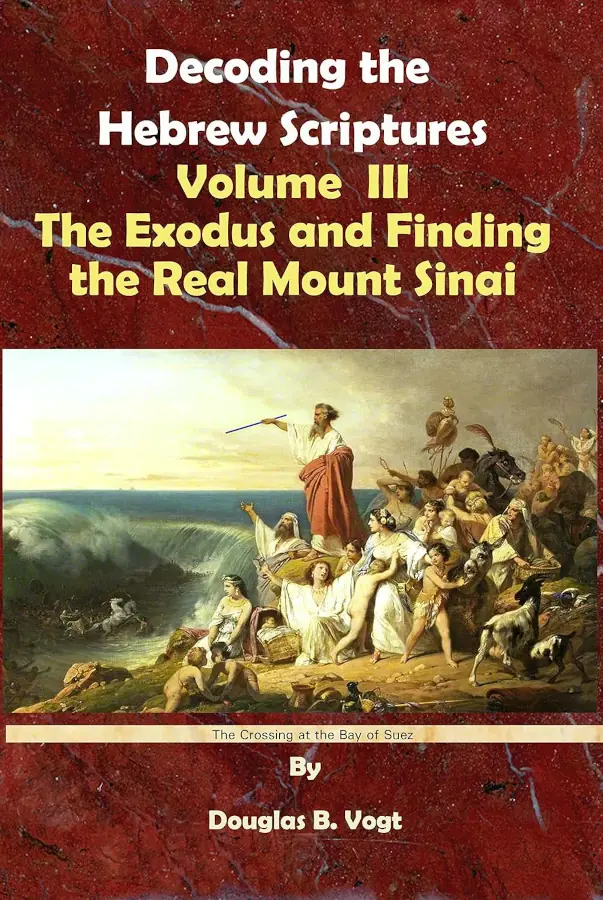T his volume contains the results of two expeditions to the real Mount Sinai and a third expedition to identify where the crossing was at the Bay of Suez. It covers the geological and archaeological results of these expeditions. The author is the first person in 2,600 years who correctly located the real Mount Sinai and found all the altars that Moses mentions in the Torah, including the real Abraham's Altar. The book puts an end to all speculation that the Exodus and Moses did not exist. After all, fictional people do not leave physical evidence behind.
The average person does not "literally" believe that an 80-year-old man could take a wooden staff and cause the Nile River to turn to blood or frogs or locusts would cover the land, or the killing of the firstborn of the Egyptians, but avoid the Hebrews. In addition, how absurd to think that this same old man could take his staff and split the Bay of Suez so it would appear as two walls of water.
Historical Relativism teaches that Moses, Aaron, Abraham, Joseph, the Exodus, the Ark of the Covenant, Mount Sinai, and other persons of the Torah is all fictional. They also believe that the Torah was written over 700 years and finished by Jeremiah. This volume ends with historical relativism applied towards the Torah.
To counter this viewpoint, this volume will provide pictorial evidence from three expeditions that the story of the Exodus did happen with evidence to prove the existence of all of the altars, caves, and wells described in the Torah. Evidence like the actions of the priests of Amon, trying to blot out all reference to Akhenaton’s family, also tends to prove it. The story told by the Tell E-Amarna tablets proves that the invasion of Canaan was in the period just after Akhenaton. The Old Testament's account of the invasion of Canaan by Joshua and the Hebrews is historically correct even though some of the names are somewhat different. Akhenaton's appearance agrees with the clues in the Legends of the Jews.
The names of the cities of Zoan, Tanis, and Sukot (later became the holiday Succoth) and the people involved match the Torah clues. The Exodus route that this book follows fits perfectly with the physical geography and towns listed in the Torah as well as the dates and the cycles of the moon. Finally, Joshua mentions the town Ay (named after the Pharaoh Aye) that pinpoints the time frame. The question is: Who is right, and who is deluding themselves? The truth is a lonely fish in a sea of lies, especially when so many other fish feed on those lies.
Table of Contents
Introduction, 1
Egyptian History and Locations at the Time of the Exodus, 19
The Pharaohs of the XVII Dynasty at the Time of the Exodus, 39
The Ephraimites and the Beginning of Moses’ Journey, 55
The Plagues Leading up to the Exodus, 73
The First 27 Days of the Exodus, 85
The Crossing to the Battle of Amalek, 97
Encampment at Mount Sinai, 123
The Ark of the Covenant and How it Worked, 167
Dating the Exodus, 189
The Aftermath in Egypt, 213
The End of Historical Relativism and Conclusion, 229

ISBN 9780930808204, 234 pages
Paperback
$24.50